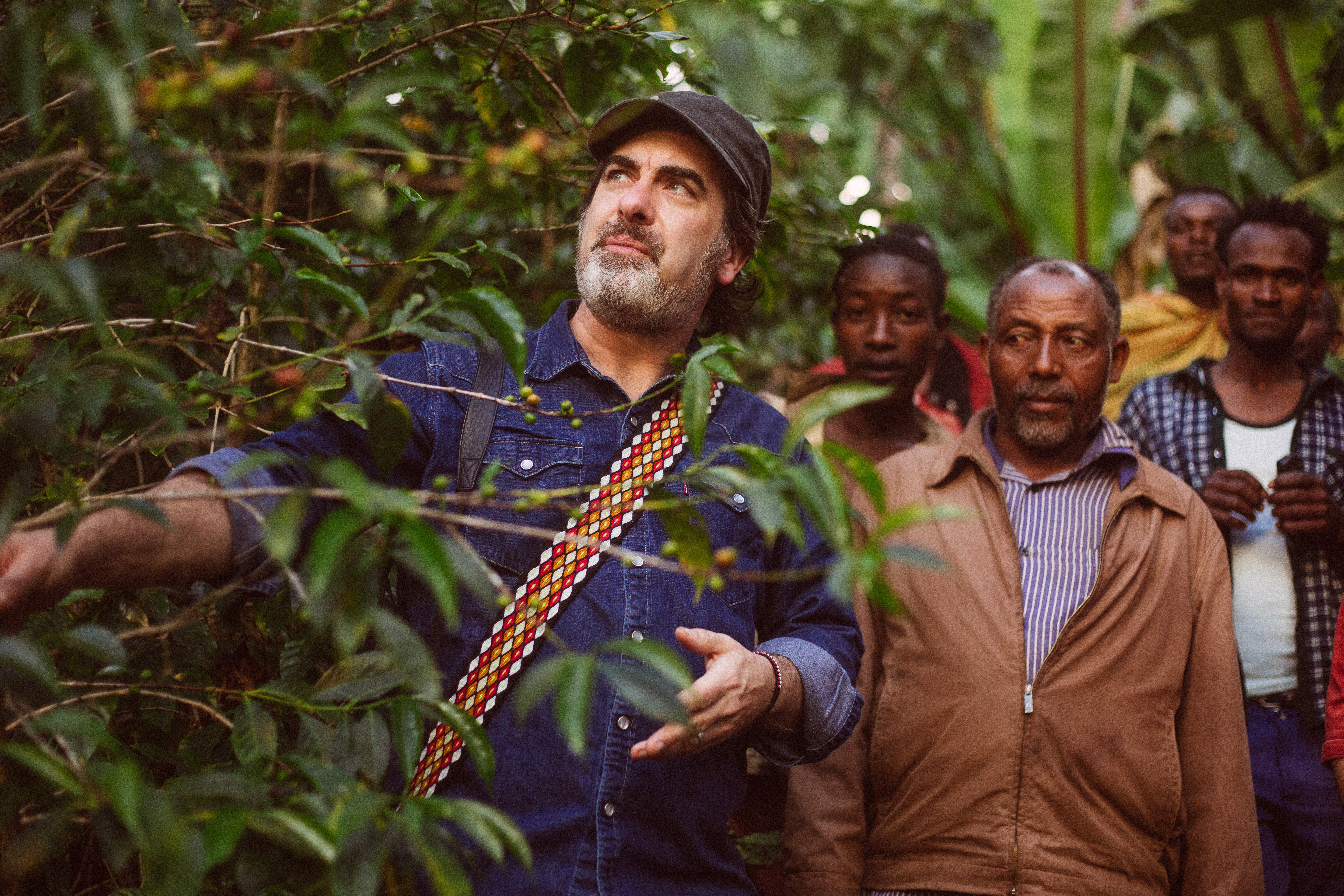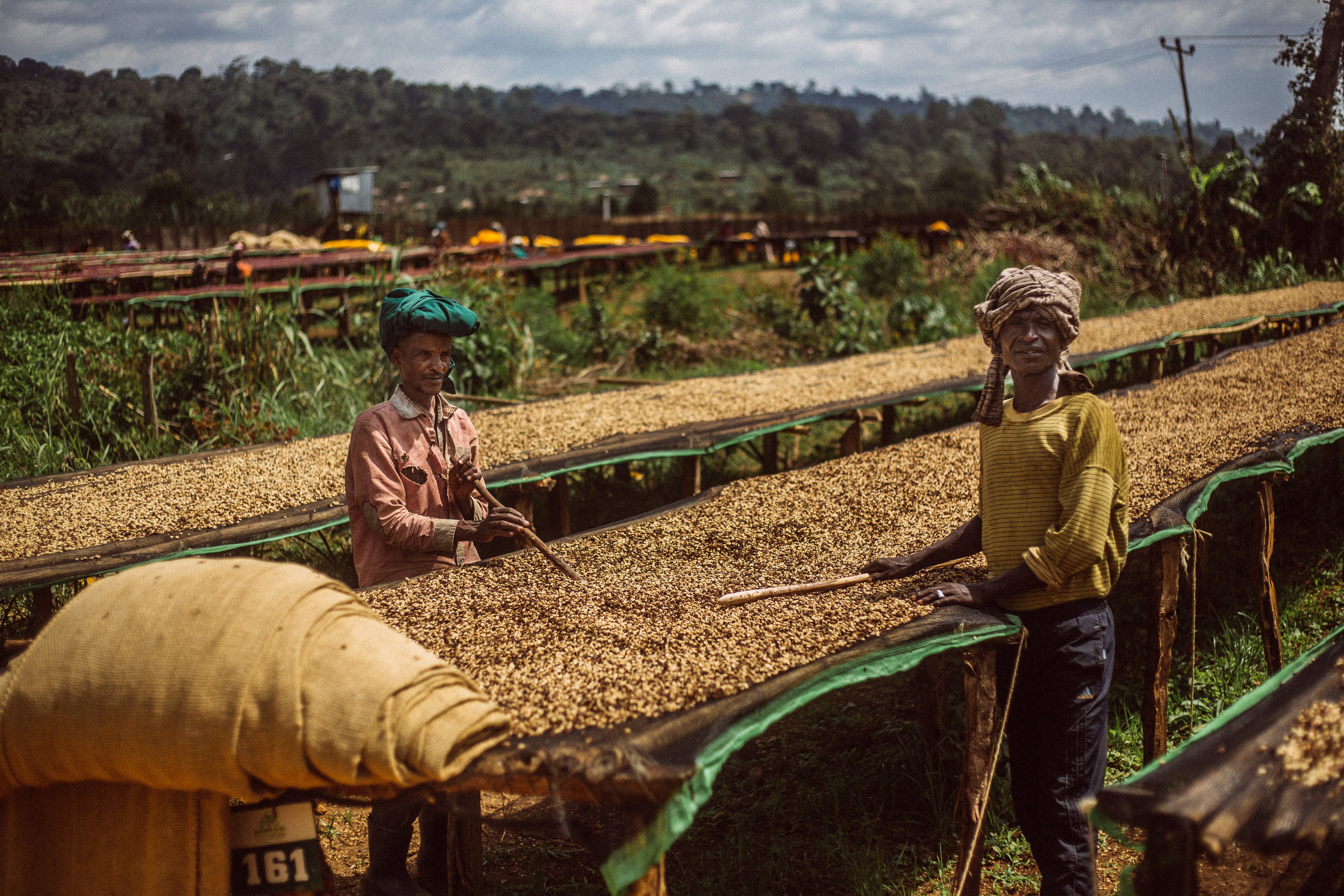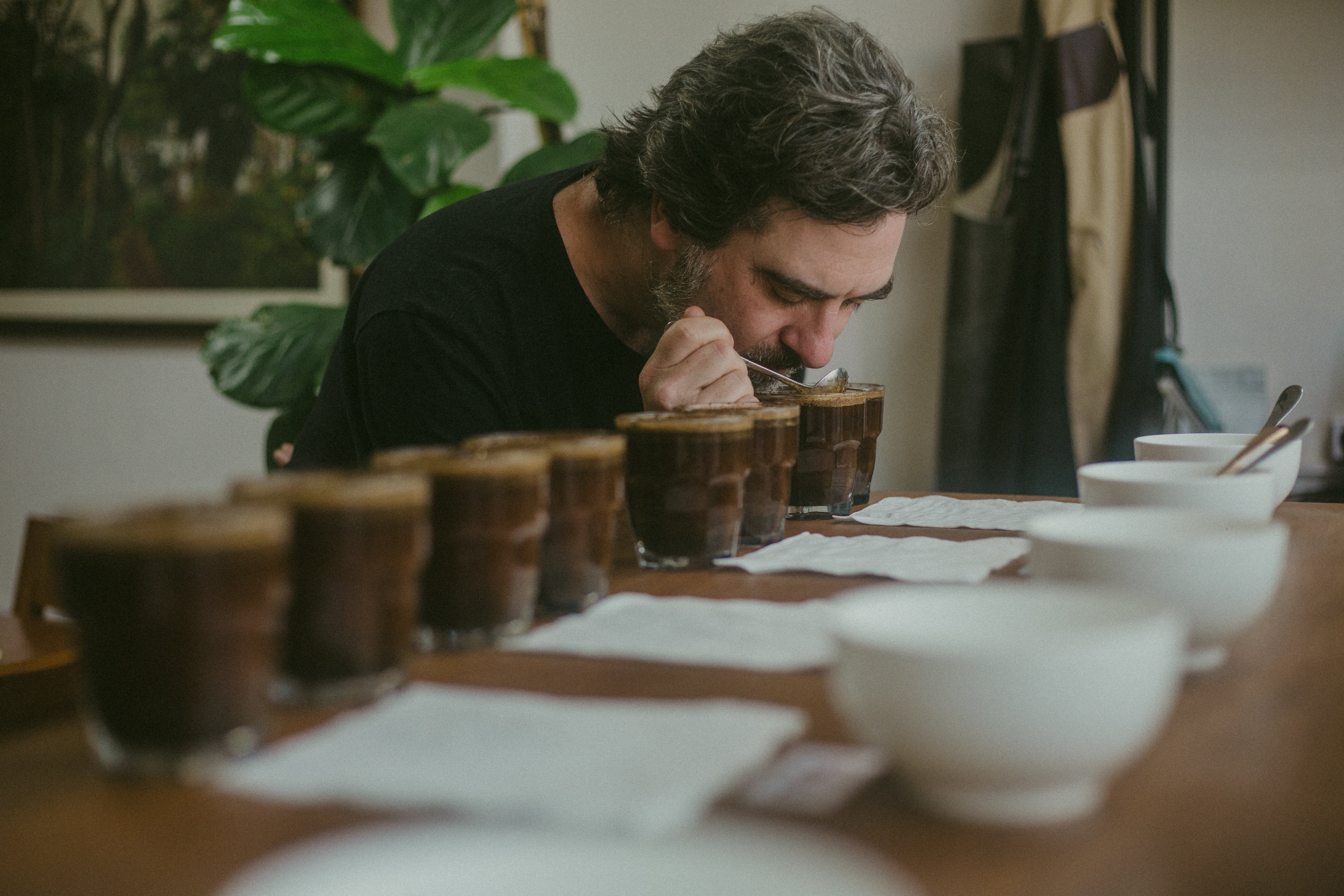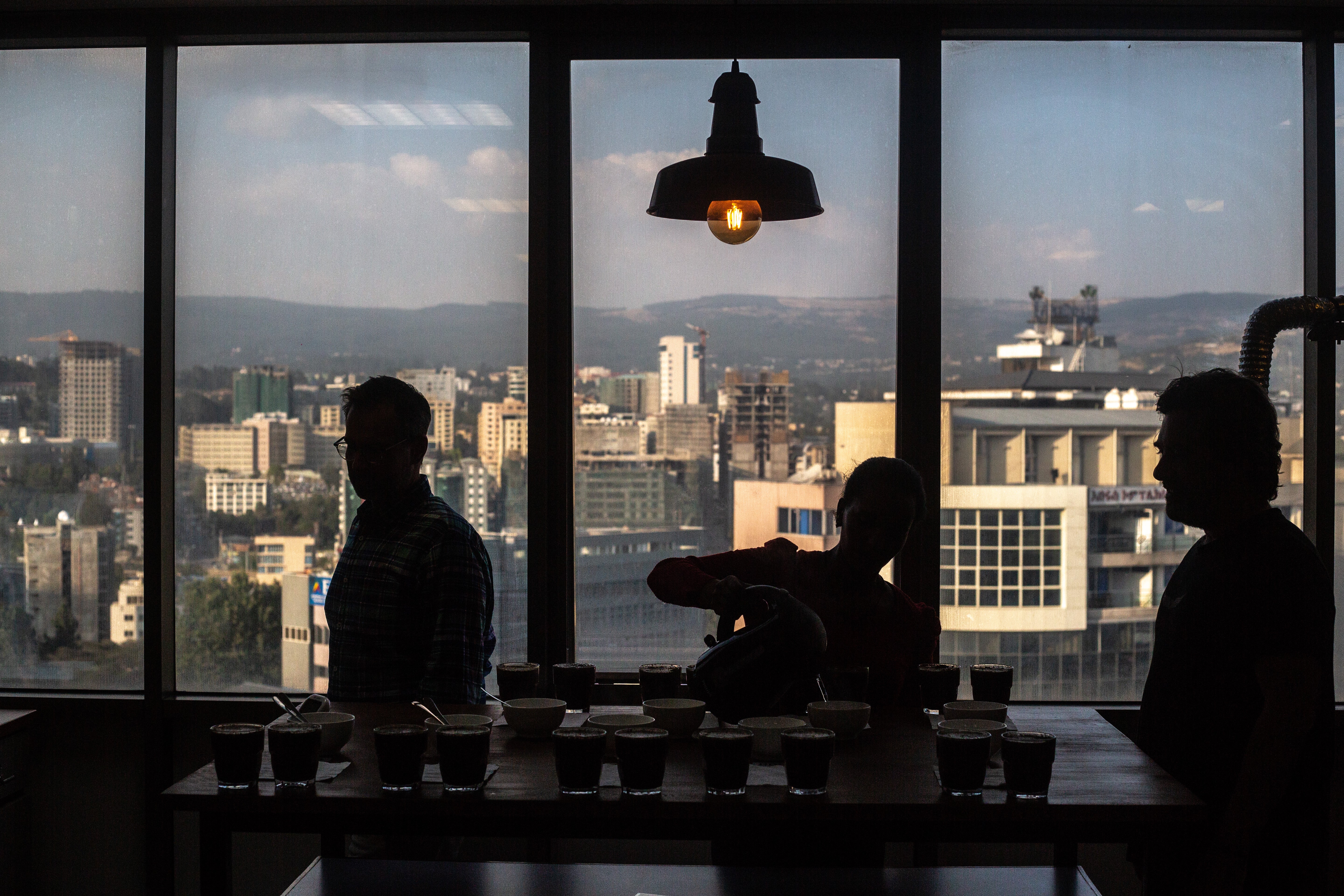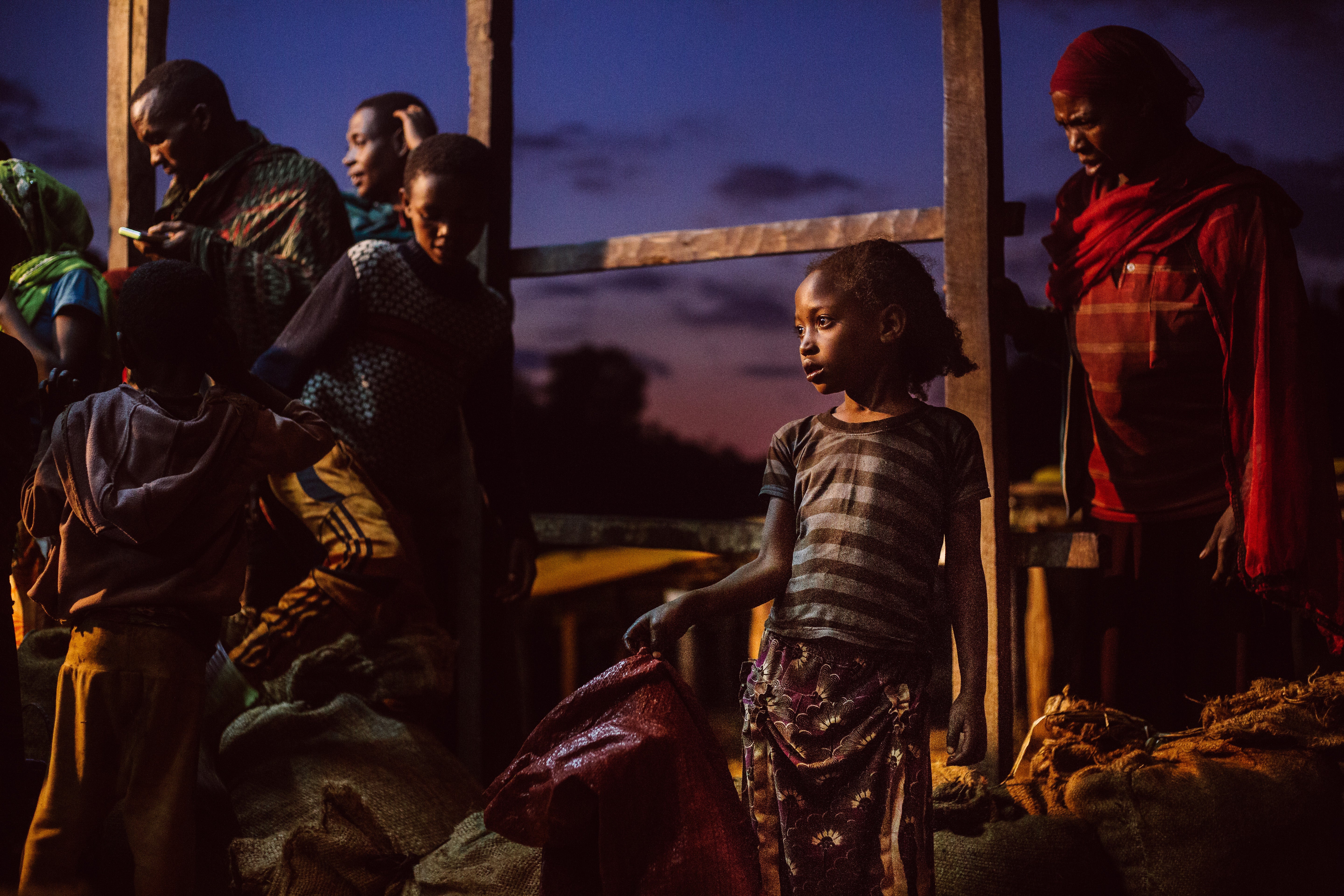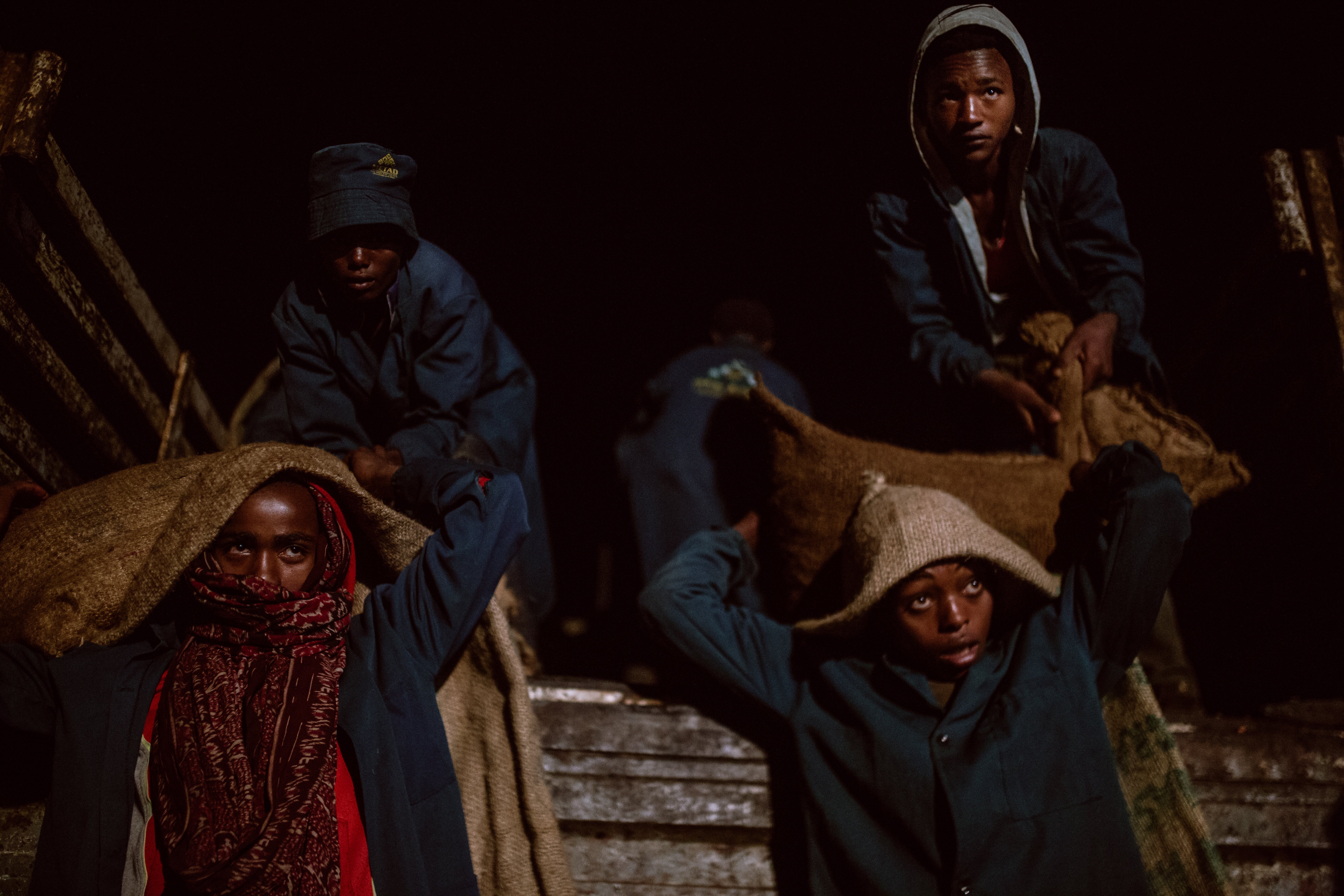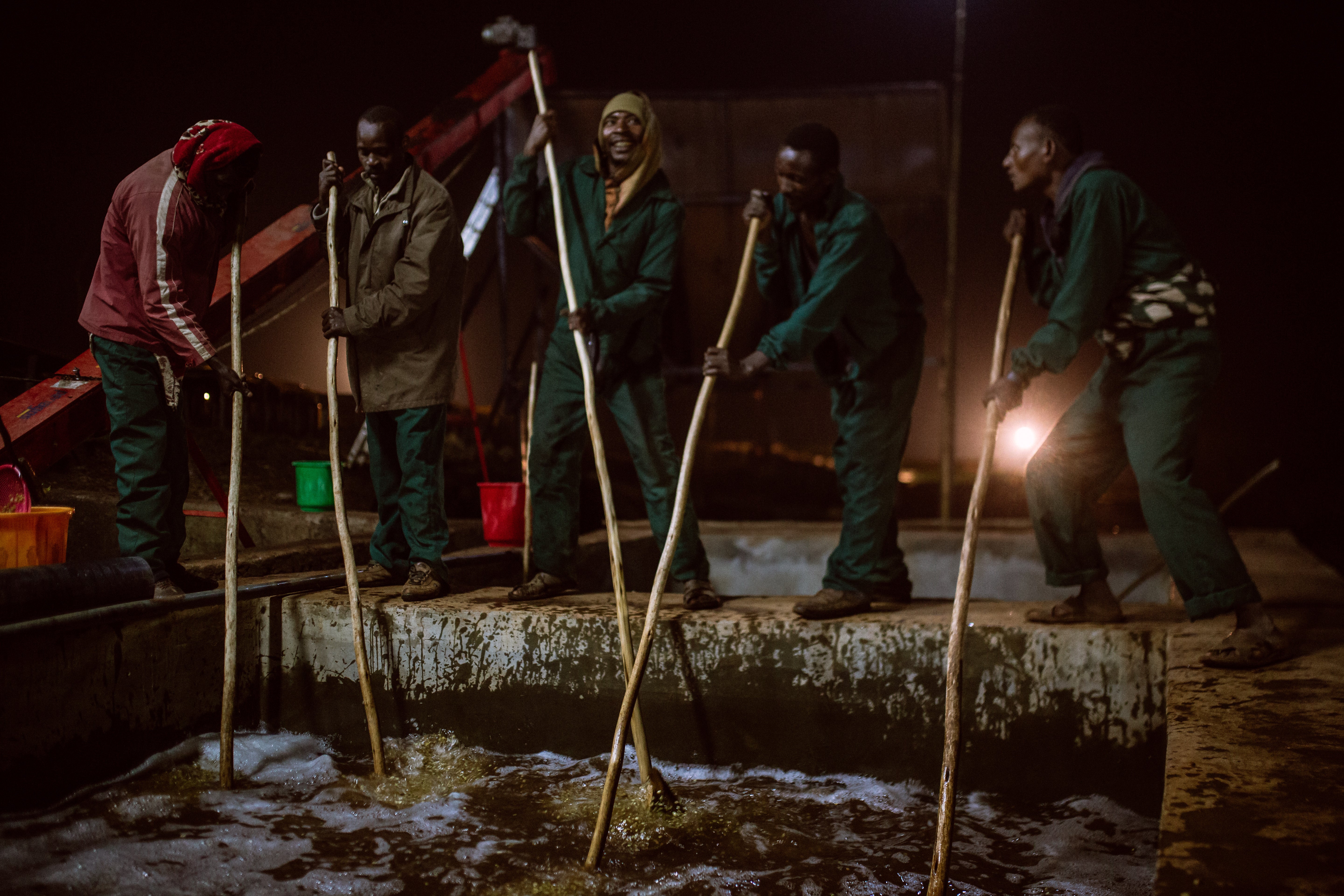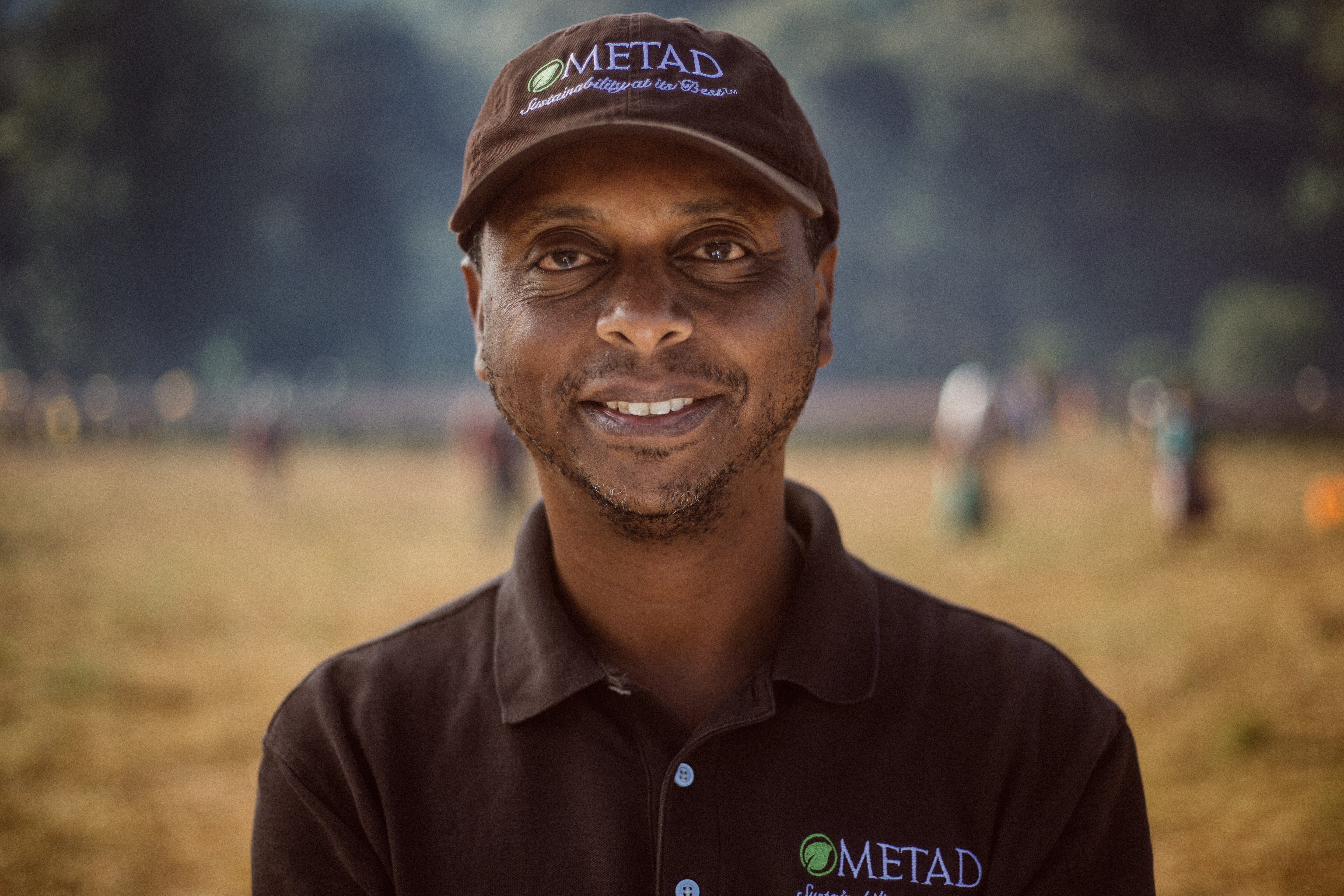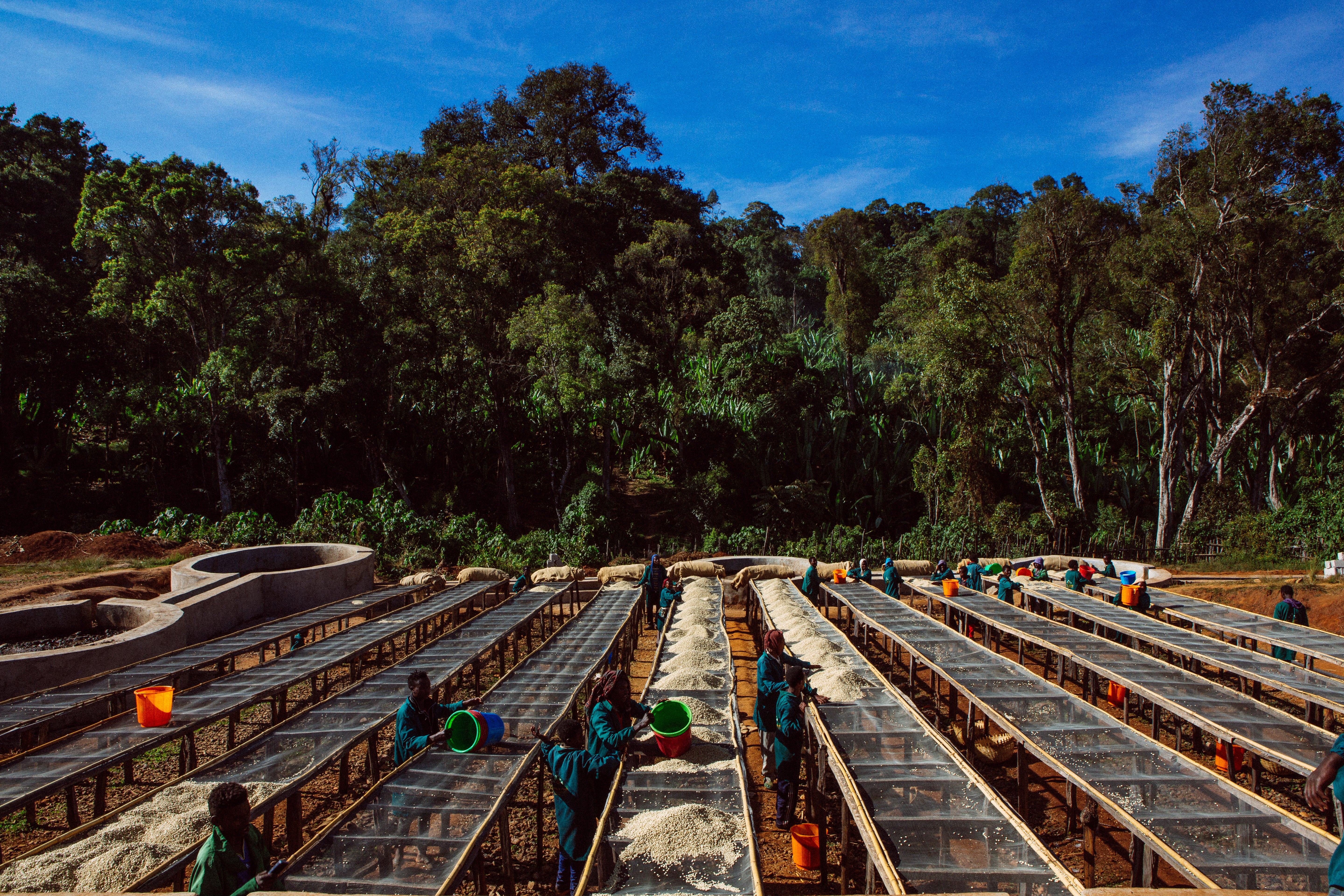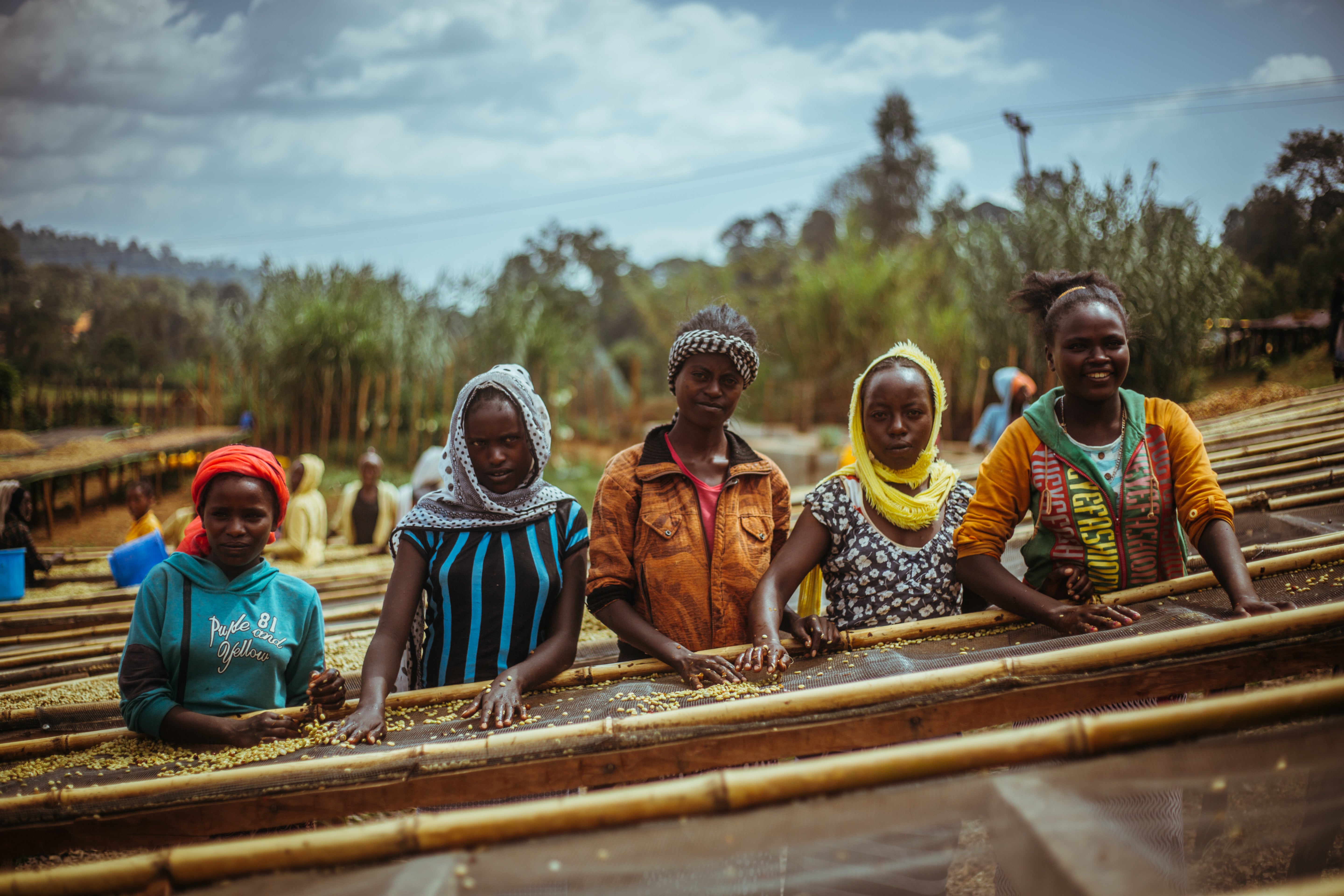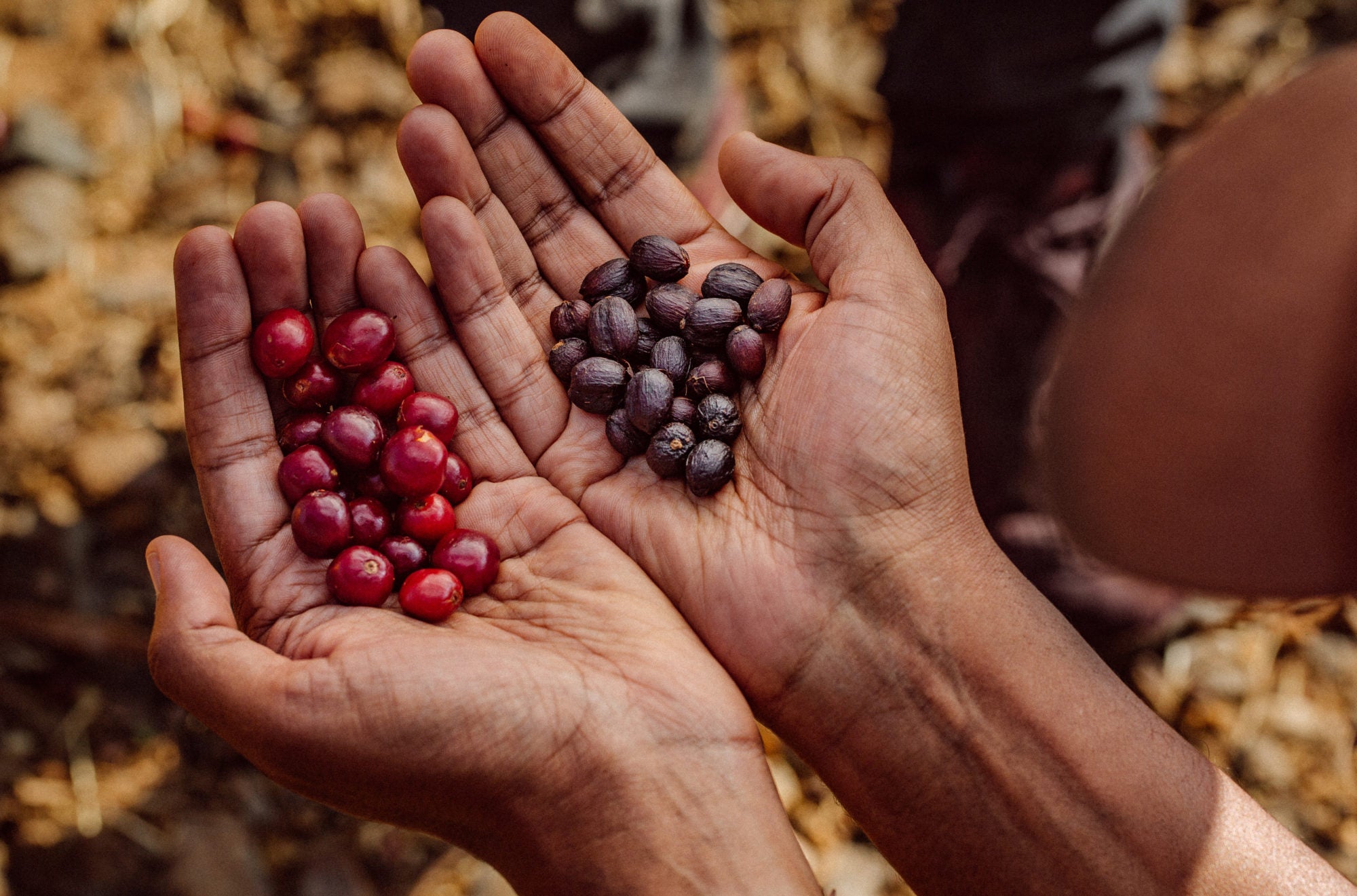
Ethiopian coffee is one of the world’s great culinary treasures. It’s also extremely undervalued. Geoff Watts, cofounder of Intelligentsia Coffee, is on a mission to get you—and the $100 billion industry—to pay more. Much more.
It’s a Sunday in the Guji Zone of southern Ethiopia in mid-December, and Geoff Watts wants to go for a walk. As one of the cofounders of Chicago’s Intelligentsia Coffee and a pioneering buyer of green coffee with nearly two decades of experience in Rwanda, Kenya, and other parts of Africa’s mountainous and extraordinarily fertile coffee regions, Watts has been on many of these walks. A youthful 45 years old, Watts has a scruffy beard and is often wearing fitted denim—he could fit in well equally at a Q-Grader training session and a Pitchfork Festival after-party. He speaks in an even, almost soothing, constant stream of coffee-related pontification.
The Geoffisms, a mix of science (“You can find 50 data points: environmental, genetic, you can learn about the producers, the origin itself!”) and art (“Forget cafés. I’d like for coffee to be served in a paper cup, in a slightly dingy room, on a plain wooden table, and have a customer stop and say, ‘This coffee is smoking!’”), were ever-present in my week spent traveling with him throughout Ethiopia and visiting the Intelligentsia mothership in Chicago. Throughout it all, Watts helped me understand a simple, though extraordinarily complex and misunderstood, reality.
Coffee, one of the world’s most coveted commodities, is grossly—criminally—undervalued. And in particular, coffees from Ethiopia—the ancestral home of coffee, where it serves as a supportive backbone for a weakened economy and a society stricken with unmitigated disease and poverty—is one of the world’s great culinary treasures. There are the fire-roasted green chiles of Hatch, New Mexico. The pristine fish sauce of Phú Quốc, Vietnam. The majestic wines produced in the houses around Dijon. And there are the washed coffees of Bishan Fugu. This coffee’s journey from a mountain in southern Ethiopia to your home Chemex, or favorite neighborhood third-wave shop, begins on this walk, with a favorite Geoffism.
“This tastes like it came straight out of the mouth of the gods.”
It’s around 5:30 p.m., and we’ve stopped our Toyota Land Cruiser at a cluster of mud and thatched-roof huts. It feels good to stretch our legs. For the past two days we’ve been in the car with our driver, Hussein, for intense stretches of time. It’s around a 15-hour drive from Addis Ababa, Ethiopia’s sprawling and dusty capital, to the southern coffee lands—a region mostly outside the Google Map that overlaps the Sidama, Gedeo, and Guji Zones, among others. Once 90 minutes outside of Addis, the paved roads turn to dirt and rocks, and your back, neck, and internal organs feel every bumpy mile.
Weighed-down donkeys, horse-led carts, and the occasional camel choke the single road that runs from north to south. We pass through the towns of Awassa, Dilla, and Yirga Chefe before ending up in this remote region. No cellphone service—either for international carriers or the national monopoly, Ethio Telecom. Limited electricity. Geoff Watts is with his people. Coffee people.
And we are out of the car and walking with a group of 50 people, a mix of coffee outgrowers and villagers, as well as many curious children—some making the two-mile trek without shoes—who dart through the dense forest as we huff and puff, angling down a narrow path until we get to the trees.
“This is one of the highest coffee you can grow in the world,” says Watts to the growing crowd, grinning and plucking a crimson cherry off the coffee tree—which is in actuality more a five-foot bush. He pops the cherry into his mouth and sucks down the fruit, spitting the seed into the palm of his hand. The seed looks just like a coffee bean you would pour from a bag of Counter Culture Hologram—same shape and size, only cream-colored and not yet the chocolate shade created through a caramelization process called roasting. That will come much later.
We are at 2,250 meters (7,300 feet), and Watts is extremely stoked to be observing and documenting coffee at its origin. People in the coffee industry say “going to origin” as a kind of catch-all phrase for the ritualistic act of visiting farms and washing stations, the latter being seasonal markets where coffee cherry is bought and later transformed from living agriculture to inert burlap sacks in a warehouse.
Visiting origin is a badge of honor for coffee professionals (baristas, roasters, importers, people who produce coffee-related content beyond an IG of a cool latte flower) not only because it’s these exact coffee professionals who spend decades obsessing about the details of coffee through cupping notes, roasting profiles, extraction percentages, and general nerdery at the café level, but because origin represents the essence of the progressive third wave, which has helped evolve long-followed standards like “direct trade” into sophisticated sourcing practices in an attempt to put the farmer’s well-being first.
This, at least, is Watts’s grand plan, and I observe his empathy time and again during our visits with farmers like these high in the Guji hills and at the Alaka washing station where we are staying for a few days, which transforms from tidy processing center during the day to cacophonous market at night.
“This is some smoking coffee!”
Watts got his start in coffee not through drinking it, but indirectly, through eating amazingly well as an undergraduate at UC Berkeley starting in the early ’90s. “Growing up, my relationship with coffee was a functional and pragmatic one,” he says. “There was very little romance. I ate pizzas from Domino’s or Little Caesar’s, where you get two for the price of one. And the coffee I drank came from Dunkin’ Donuts.”
This changed when he landed on the West Coast and began eating at farm-to-table meccas like Chez Panisse and, before that, spending a semester abroad in Vienna, where coffee has long been served with great purpose and specificity. “I was reading a lot of Freud and wanted to go to all the coffee shops where Freud sat and did his thing,” Watts says with a laugh, remembering his time spent at Cafés Landtmann and Hawelka. “But it was then when I started drinking coffee more deliberately.”
Back in the Bay Area, he would walk down Telegraph Avenue and visit Caffè Strada and Caffe Mediterraneum, which were selling coffee from distant places like Ecuador and Papua New Guinea. “It was an eye-opener in that coffee went from being this little thing to being many things. And that was the beginning of an opening in the way that I thought about coffee,” he says.
Watts started buying coffee in 1997, a year and a half after Doug Zell launched Intelligentsia with Emily Mange in a small storefront in Chicago’s Lakeview neighborhood. Up until Watts’s arrival, Zell handled the buying and roasting, which Watts acknowledges was done mostly over the phone or fax. He would call up one of a number of different importers or brokers—at the time it was mostly multinationals that were slinging high volumes of commodity-grade coffees—and the occasional boutique trading house, like Royal Coffee or Café Imports.
“I’d call up my buddy Tim and say I needed a good Guatemalan coffee and what do you have,” he recalls of his early buying practice. “And he’d say, ‘I’ve got this coffee from Antigua that I think you’d like, and I’ve got these four Guats, I’ll send them your way.’ And so I would get samples from three or four different importers. I would taste them in a KitchenAid or Krups—I used to have a whole fleet of Krups coffee makers, and so I would brew and synchronize—and taste all at once. And then I’d say, ‘All right, I like that one.’ I’d call up Tim and say, ‘How much do you want?’ And I’d buy the coffee.”
Having spent many hours cupping with Watts (more on that later) in both his Chicago lab and labs in Addis Ababa, and days (literally; Watts is a gold-medal talker) discussing the intricacies and incredible thought that goes into sourcing coffee for purchase (the washing station conditions, whether the farmers are being paid equitably, the precise burlap materials the coffee is stored in), I feel confident in saying that the lo-fi and imperfect way Watts started his career buying coffee is absolutely absurd. It’s like downloading a .jpg via Prodigy dial-up compared to pressing your index finger on an Instagram Story. This game has evolved.
Watts is a firm believer that judging coffee through a methodical process called “cupping” is the only way to root out the good coffees, the great coffees, the “smoking” coffees—a term I heard him use on only a few occasions. He describes his approach to cupping as both inquisitive and reflective, and I saw this on display in Chicago while he and his colleagues at Intelligentsia went through 10 coffees blind. They first noted the aroma of the ground coffee naked, then noted the aroma of the grinds after 202°F water had been poured over and saturated the grinds, then four minutes later noted the aroma of the coffee vapor that had broken through what the professionals call the crust, and then finally tasted the lukewarm coffee-infused liquid, taking a spoon and at the same time inhaling the aroma of the liquid and tasting it on their tongues, sometimes with a slurping sound (the volume of the slurp is up to the taster—Watts is relatively quiet compared to the dozen cuppers I’ve observed).
Cupping is not only utilized internally by coffee companies looking to purchase large volumes of coffee from faraway lands, but also in an exclusive Olympiad called Cup of Excellence, where coffees are separated by country and graded (blind) by esteemed members of the coffee industry—including importers, roasters, baristas. “It is the coffee industry’s most credible and prestigious coffee-quality competition,” Watts says. The competition takes place in 11 different countries and counting and evaluates coffees using a rigorous three-stage process, where thousands of individual cups are tasted before the coffees receive their final scores.
The highest-rated coffees are not just awarded special recognition but are instantly put into an auction where specialty roasters—both big and small—will plunk down 10 to 100 times the standard price (the public c-market) per pound. Last year, a top-rated Brazilian natural coffee—from producer Maria do Carmo Andrade of the Fazenda Paraíso farm—sold for over $80 per pound wholesale.
Watts is a member of the Cup of Excellence’s board and a past president of the Alliance for Coffee Excellence Executive Committee (which owns and operates Cup of Excellence), and he has served on many influential judging panels. He’s considered by many to have a golden palate. His reputation in the industry is peerless. I ask him at some point about why Ethiopian coffee isn’t part of the Cup of Excellence. “There were some historic obstacles that stood in the way of CoE Ethiopia—it is a uniquely complicated country—but having it in Ethiopia has always been seen as a sort of holy grail for coffee buyers,” he says, with the hope that it will finally be coming to Ethiopia in 2020 (the unofficial word on the street is that it is).
“When I saw the coffee cherries growing on the tree, the water dripping off of them and looking lush, tasting super sweet, this gorgeous honey, papaya-like flavor, coffee’s connection to food clicked.”
Watts’s first origin trip was to Mexico in 1999. “It was mind-blowing and showed me clearly that I’d been doing it wrong all this time,” he recalls. “We were playing with Tinkertoys.” In general, his awe at origin was twofold. First, he realized that instead of the four or five coffees he was being offered by his importer friend over the phone, there were literally thousands available. Second? “After that trip it was imperative that I get down and start exploring as much as humanly possible.”
The Alaka washing station, about 35 kilometers from the villages of Benti Nenqa and Buku, is a hub of activity when we drive in at dusk. Coffee cherry is everywhere—streaming out of weathered burlap sacks, packed into the beds of large diesel-engine trucks and loaded onto the backs of the beasts of burden commonly found walking the dusty roads leading from town to farm. Cherry is spread across hundreds of yards of drying beds, both recently pulled fresh from the tree and shriveled from the blazing sun. Cherry is in the air. It smells like fermentation (that familiar wine- or beer- or bourbon-producing yeasty smell that coats your nose and doesn’t let go). It’s not a bad smell, but it’s not pleasant, like baking bread.
The smell hangs in the air there for the four nights I spend on the farm—which consists of the coffee-processing machinery, the drying beds, a cluster of huts, a kitchen and dining area, a large warehouse, and hundreds of Ethiopian day laborers and permanent workers who travel many miles, on crowded trucks and on foot, to work 8- to 12-hour shifts during the two-to-three-month harvest season that I am witnessing. There are also the outgrowers, who have picked the cherry during the day and brought them to this washing station to sell for 15 birr a kilo (around $0.50).
The weather is crisp and dry, like a fall night in Los Angeles, and workers wear a mix of coveralls—provided by METAD, the Addis-based company that operates Alaka—and fashionable streetwear. Fitted jeans, fake-leather jackets, logo sweatshirts for American basketball and U.K. football teams. The workers crowd around the actual washing station, which is wall-less structure with a 12-foot-high tin roof and fluorescent lights turned on to fight the approaching darkness. A line has formed; on one night it stretched to more than 20 farmers waiting patiently.
At some stations, the wait can be a day long. All are there to sell their perishable fruit, which METAD buys at a price dictated by a number of factors, including the country’s powerful commodity exchange, the ECX, as well as local supply. METAD’s chairman, Aman Adinew, and his brother Tariku Adinew (the company’s COO), along with Watts, are adamant that the prices paid for the coffee cherry are well above the market rate—which is both equitable to the farmers and also provides incentive for the farmers to sell their best product. A profit-sharing bonus is also provided at the end of the season, and farmers—after being paid in cash—are given a handwritten receipt logging the sale, to be presented for credit later.
On two separate nights, I sit next to the washing station’s money man, a 24-year-old water engineering graduate named Haile Sous. While he grew up in Addis and has dreams of moving to Canada to pursue a career as a pastry chef, several immigration holdups have brought him to Alaka for the season. We talk casually as he hands out hundreds of dollars’ worth of birr to the farmers. (The wad of money—amounting to a year of an Ethiopian farmer’s salary—was held in a plastic grocery bag and placed on table in plain view. There was a clear code of honor and respect on the farm, and Haile shrugged off any mention of the need for security.)
Sous confirms that the price fluctuates each day; last season it went as high as 22 birr. But on the days I visited, the price was hovering around 15. He shows me the log, written in Amharic, and the pages of recipes written out to the farmers, who are promised a bonus of around 1 birr per kilo at the end of the season.
Later on the first night, Watts shows up with a JBL docking station playing Belizean Punta singer Andy Palacio and the song “One Ethiopia” by Ejigayehu Shibabaw, who goes by the stage name Gigi and is a favorite of Watts. The workers sing and clap along, as Watts plays the role of mascot and DJ—with a wide smile made wider by the case of Riff Valley wine that flowed.
Each night, sneaking into morning, the coffee cherry is collected, workers sorted, Haile paid. But collecting the raw cherry is only the start of the Ethiopian coffee’s journey from tree to your Chemex. There are many steps along the way, with some forces undercutting the work Watts and others in specialty coffee have done trying to increase the value of the coffee and boost farmers’ profits.
“I’m looking for the unicorn, a coffee with all of the best features of a washed, coupled with the best features of a sun-dried natural. That kind of coffee will cause people to swoon.”
The 200 hectares of Alaka’s coffee estate is hilly, and I’m huffing and puffing as we visit with the plants Watts and METAD COO Tariku Adinew care so deeply about—clusters of the prized 74110 and Kurume varietals. In the distance sit the rows and rows of coffee, drying in the sweltering midday heat. Half the tables are filled with streaks of colors, some glowing red like the surface of a cranberry bog, and others like giant raisins—dark and decayed. The other half looks like dried beans. Beige and smooth.
The colorful coffees are called naturals and, as the name suggests, are less processed than other coffees; in recent years they have been widely celebrated in specialty coffee. The cherry that is bought by Haile at the washing station is sorted for debris and placed on the tables. At night they are covered, but during the day the coffee is left to dry in the sun—though it’s covered during the peak of the afternoon heat—agitated every one to two hours by a legion of workers. Over time in the sun (around 10 days to as many as 25), natural processing separates the seed from the pulp, and the seeds (what we call coffee beans) are pulled from the tables and hulled of their thin shell, either on or near the farm.
Some have described the natural processing technique as being similar to the making of red wine. “With the natural processing, you’re letting the fruit and the nutrients from the skin and the sugars go into the seed through the drying process,” green-coffee buyer Tim Hill told the influential coffee journal Sprudge. This is the way coffee was originally, and is still widely, produced in Ethiopia, though in recent years more and more washing stations have been set up. Due to this prolonged contact between bean and cherry, natural coffees tend to have more fermented flavor—I get a lot of “cheese” out of my first sips of a naturally processed Ethiopian roast.
“Natural coffees offer a wide variety of flavors, depending on where the coffee hails from, what variety the fruit was to begin with, and the attention to detail paid throughout the drying process,” says Jordan Michelman, the founding editor of Sprudge. “I have tried natural processed coffees that taste like the most delicious, luscious, sugary blueberry muffin you have ever had. I’ve also had ones that taste like poopy baby diaper and rotten banana. Nothing else tastes quite like a natural coffee, and when it’s done right, it’s one of the most extraordinary flavor experiences to be found in all of coffee.” Naturals taste wild, and coffee connoisseurs and professionals like Michelman seek out flavors that break the middle-of-the-road form.
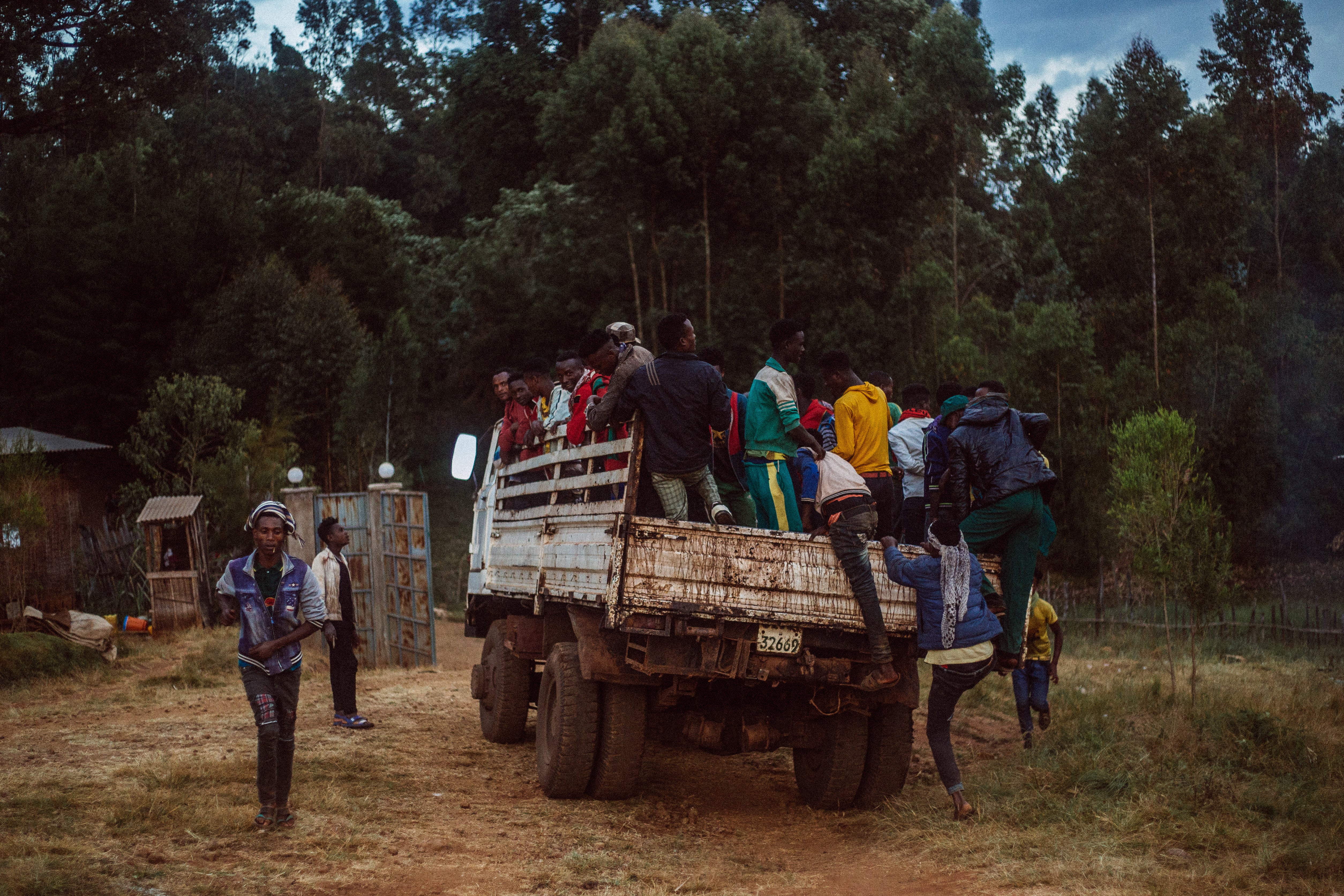
Above: Natural coffees being sorted, and drying in the sun. Here: Workers catching a ride to a nearby village
On the flip side is processed, or washed, coffee. Washing is how most coffee is produced around the world—in coffee-growing regions like Peru, Bolivia, and most of Central America —and gets coffee more to the middle-of-the-road form. Some of the steps in the process are similar to naturals, but with some extra steps. The cherry is purchased by Haile, sorted, and instead of being sent directly to the tables to dry, it’s forced through a machine that strips the coffee of its slimy pulp. The drupe (what we come to call beans) still have a coating of mucilage and are soaked in large tanks of water for one to two days of fermentation, then placed on large drying tables for additional drying (8 to 15 days).
Once the coffees are dried, sorted, and bagged in a bone-dry warehouse, they are transported to Addis—the 14-hour drive I bumped along to get to Guji. In Addis, unwashed coffee undergoes a final process called hulling—removing a thin layer called parchment. Once the parchment is removed, the coffee is ready to be sold. Ethiopian coffees end up in Djibouti, where they are loaded onto ships that will work their way through the Suez Canal, into the Mediterranean, and eventually to Europe and onto the loading docks of coffee companies like Intelligentsia in the United States.

Above: Washed coffees hitting the drying table after fermentation. Here: Washed coffees being sorted in the sun.
“One of the frontiers that we need to devote more time to is cracking the code to finding a consumer who is more deliberate and discerning in their decision-making.”
Coffee exporting is typically measured in titanic terms: shipping containers. One container can carry 300 bags of coffee, each weighing 60 kilograms (132 pounds). METAD exported 42 containers of coffee out of Ethiopia in 2017 and is scheduled to export 48 from the 2018 harvest. Intelligentsia buys hundreds of containers from around the world but bought only four from Ethiopia in 2018. Watts hopes to double that amount in 2020. Once the green coffee arrives in Chicago, Watts and his small team—comprising cuppers, QA professionals, marketers, educators, sales executives, and roasters (many wearing multiple hats)—bring the green coffee to its final stage: a bag of whole beans in your cupboard or a shot of espresso at your favorite café.
Roasting can make, but mostly break, a green coffee, and in the basement of Intelligentsia’s Chicago headquarters—called its Roasting Works—employees are busy working on the large German-made machines that are responsible for roasting the bulk of the company’s 3 million pounds of coffee annually. The lion’s share of the company’s wholesale and retail sales comes from its blends (the Black Cat espresso, as well as El Gato and El Diablo, are sold around the country to grocery stores, cafés, and restaurants), but it’s the single-origin coffees that make the most noise. Watts and company sell their Ethiopian coffees under a couple names, and the washed coffees from Guji are primarily sold under the Tikur Anbessa label, named for Ethiopia’s iconic Black Lion. The coffee sells for $24 a pound on the company’s website.
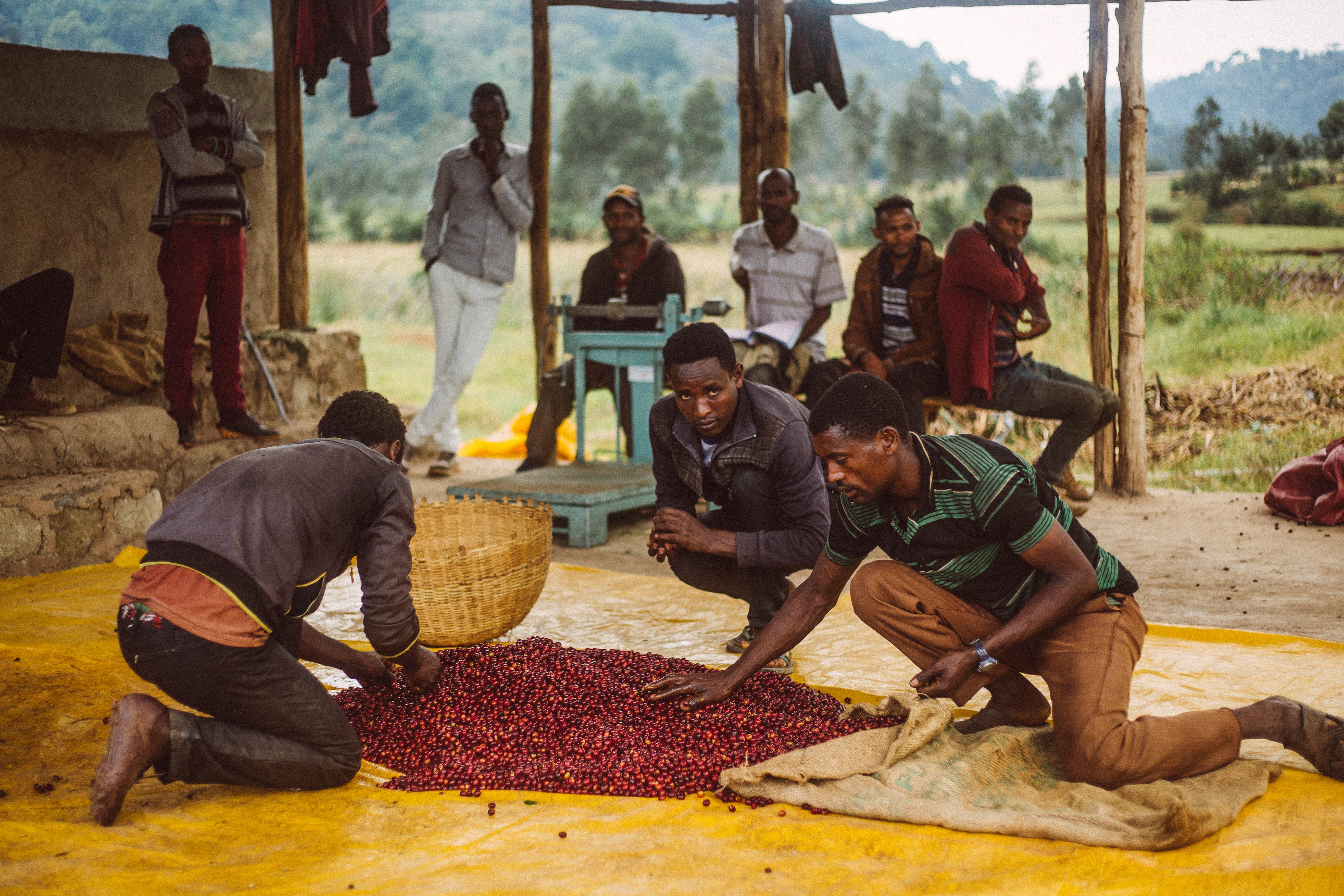
Above: Workers sorting washed coffee near Benti Nenqa. Here: Farmers selling coffee cherry near the village of Buku.
This brings up a Pandora’s box for coffee: price. What makes X Ethiopian coffee more expensive than Y Brazilian? What price is fair to the farmer? What does “direct trade” even mean? These questions cannot be answered in a single sentence, or even an article like this (though I recommend you check out our 10 Big Ideas in Coffee for more intel). But given the journey from seed to cup (no apologies for the cliché—this is quite the trip coffee makes!), is $24 even enough for what ends up making around 48 six-ounce cups?
Watts likes to tell a story—I heard it three times during our time together, and it never got old—about the time he was sitting at the Verdugo bar in Eagle Rock in Los Angeles. At the time, around 2009, he was visiting L.A. often, having just opened Intelligentsia’s pioneering café in Silver Lake. He struck up a conversation with two guys in their late 20s. “They were like aerospace engineers or something, and very sharp guys,” Watts recalls. It eventually came out that Watts worked in coffee, and they mentioned that they loved going to Intelligentsia. What a coincidence! “And they were talking about how they hadn’t had coffee like that before, and Intelligentsia was a place they went to all the time.”
As Watts tells this part of the story, a wide smile breaks out on his face. “And then they dropped the line. They said, ‘But man, the coffee is just so expensive.’” This was at a time when the café was charging $3.50 for a cup brewed from a blend, and $4 for an Ethiopian single-origin, handmade in a Chemex or V60 and served on a tray with glass of water.
“I look around, and by then we are on round three of our $7 pints,” Watts recalls. “They just dropped 25 bucks on beers that we hadn’t talked about once. And here they are, after the prelude of talking about how much they liked this coffee, complaining that we were charging too much.”
Watts takes a long pause thinking about that afternoon a decade ago.
“And that was the moment I said, ‘Wow, you know, we got so much work to do.’”
And a decade since, Watts’s work is hardly complete. He’s cut back on his aggressive and near-heroic travel schedule (this ain’t five-star luxury, not one bit), but even with a wife and young daughter back in Chicago, he’s still in constant motion—questing to improve the quality of Intelligentsia’s coffee and business practices. Weeks before our trip in December, he was visiting farms and washing stations in Kenya. A month after our trip, he was back in Ethiopia, this time spending long days in a cupping lab in Addis, assessing this year’s harvest.
For Watts, there are always new people to educate, new friends to make, new coffees to discover, another year’s harvest to scrutinize and celebrate. This is how a hobby becomes a job, a calling—and then ultimately, a life’s passion. For someone like Geoff Watts, the journey is just starting.

